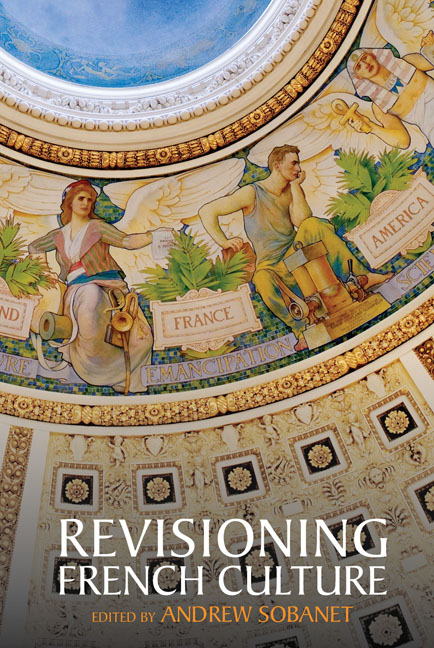Book contents
- Frontmatter
- Contents
- Introduction
- I France in Perspective: The Hexagon, Francophonie, Europe
- II Visions of the World Wars, or L’Histoire avec sa grande hache
- III Refractions and Reflections
- IV French Literature, Revisioned
- V The Subject in Focus
- VI Philosophical Lenses
- VII Coda
- Contributors
- Acknowledgments
- Index
10 - In the Shadow of the Iron Curtain: The Photo Album and the Francophone (Dis)connection
- Frontmatter
- Contents
- Introduction
- I France in Perspective: The Hexagon, Francophonie, Europe
- II Visions of the World Wars, or L’Histoire avec sa grande hache
- III Refractions and Reflections
- IV French Literature, Revisioned
- V The Subject in Focus
- VI Philosophical Lenses
- VII Coda
- Contributors
- Acknowledgments
- Index
Summary
The photo album inhabits personal, familial spaces, and is often perused by those ready to admire its life-fragments. I did so myself, seeing often in my own photographs a mirror of how ‘normal’ our life was back in Bucharest, despite living under communist constraints. But when, in 1985, we left Romania, our family photo album was dismembered. Some photographs got left behind, and others later came to us across the ocean, in a box. I reorganized and reordered the pictures, and looked at them again, as sole witnesses of my childhood. From the vantage point of my new life and my new country, I realized that my relation with the pictures had changed. These pictures were no longer just family photos but rescued documents that tell a story. Recognizing this was a crucial step: as Walter Benjamin once noted, a unique, irreplaceable image of the past ‘disappears irretrievably’ if not recognized by the present moment. These photos became photo-texts, ‘material for interpretation’ and ‘pre-text’ for the process of recollection and life writing.
These photos help me revisit my beginnings and fill in the gaps with details that belong equally to my personal history and the history of the world. By a coincidence whose significance I understood only much later, my birth nearly coincided with Churchill's ‘Iron Curtain’ speech in Fulton, Missouri, in March 1946. The fact that Bucharest, my city, was on Churchill's warning list, gave to the Iron Curtain an even more threatening dimension:
From Stettin in the Baltic to Trieste in the Adriatic, an iron curtain has descended across the Continent. Behind that line lie all the capitals of the ancient states of Central and Eastern Europe. Warsaw, Berlin, Prague, Vienna, Budapest, Belgrade, Bucharest and Sofia; all these famous cities and the populations around them lie in what I must call the Soviet sphere, and all are subject in one form or another, not only to Soviet influence but to a very high and, in many cases, increasing measure of control from Moscow.
The imposing metaphor of the Iron Curtain became in turn a harsh reality for the Eastern half of Europe, a literal wall (with barbed wires, observation towers, and guard posts) and a symbolic interdiction which aimed to prevent any circulation of people or ideas.
- Type
- Chapter
- Information
- Revisioning French Culture , pp. 137 - 156Publisher: Liverpool University PressPrint publication year: 2019



